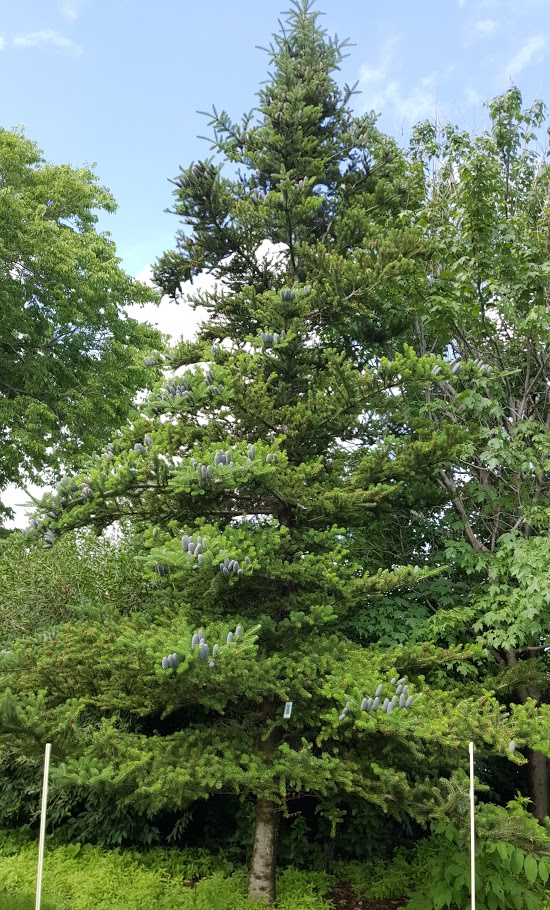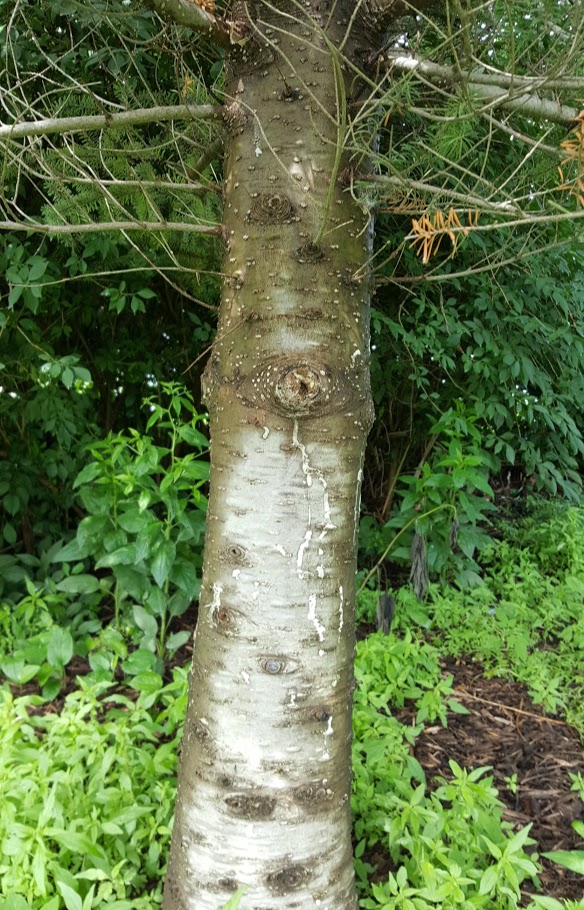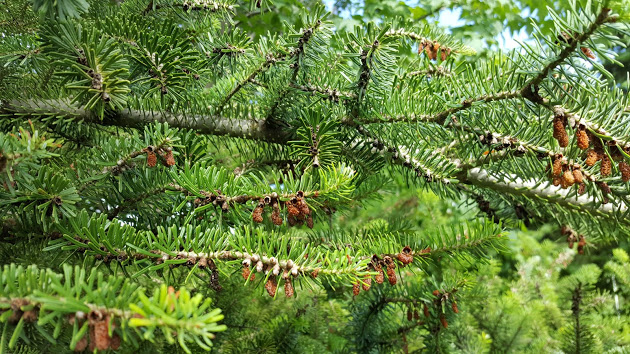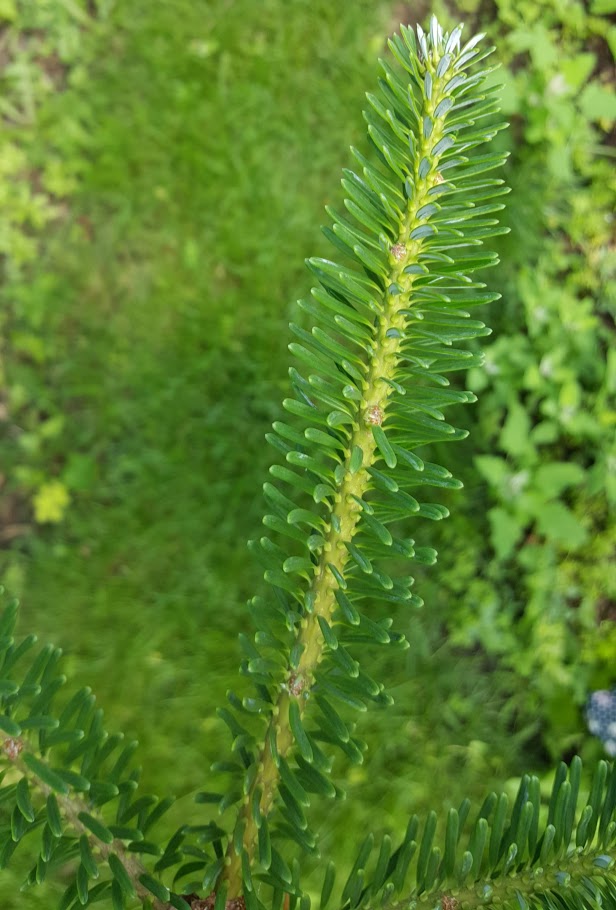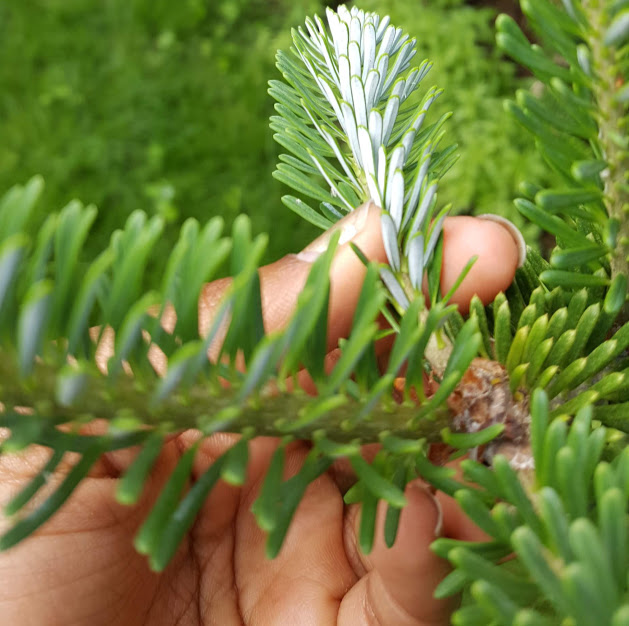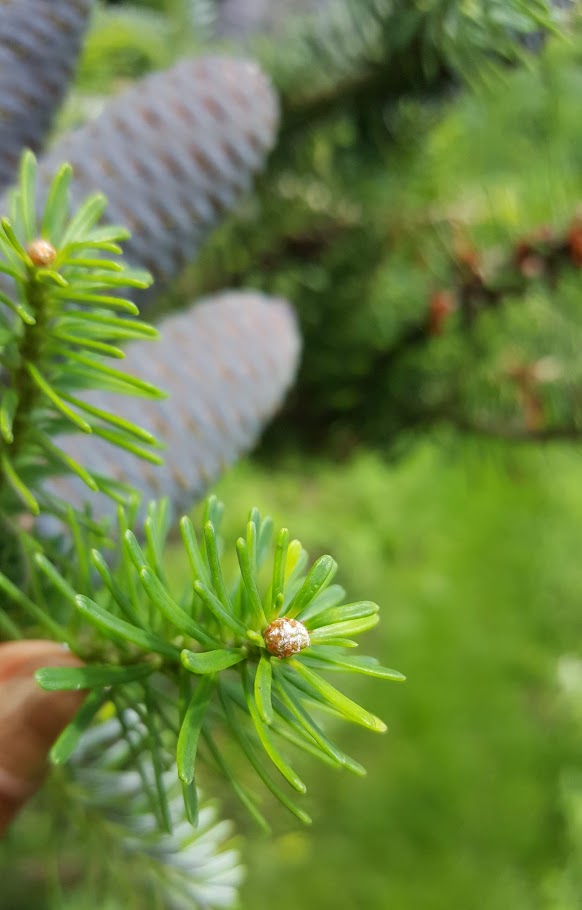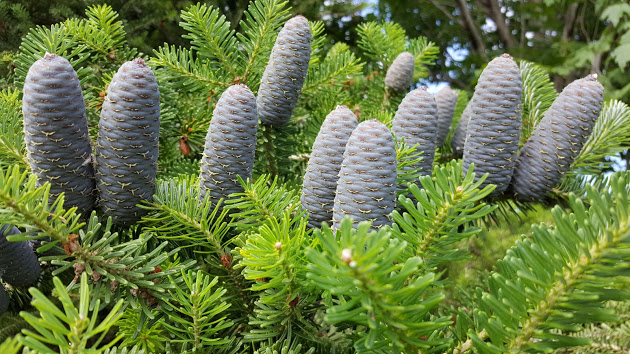Common Name: Korean fir
Scientific Name:
Family: Pinaceae
Genus: Abies
Species: koreana
Hardiness Zone: 5 to 7
Height: 30 to 50 ft
Width: 6 to 12 ft
Common characteristics:
The Korean fir can grow to heights of can reach a height of 30' to 50' tall and diameters of 3' to 6'. Its bark is smooth and covered with resin pockets. As the bark matures it will become platey and furrowed, it is a purple-gray color with distinct red inner bark. The needles of Korean fir are shiny green above and a blue-silver below. They are densely packed along the twig and arranged spirally. The seeds are purple with a red wing. A distinct feature of this fir is its purple upright cones.
Where it grows:
Best grown in rich, consistently moist, slightly acidic, well-drained soils in full sun to part shade. This fir prefers cool locations and is not recommended for planting in the hot and humid summer conditions. Trees grow poorly in heavy clay soils. Often adversely affected by urban air pollution.
How it’s used:
The Korean fir is best used as an ornamental yard or park tree. Can make a suitable windbreak.
Ecosystem services:
Many birds and mammals could seek this tree out for habitat as well as food. Seeds can be eaten by birds and small mammals.
Where it is native to:
Korean fir is native to Korea, specifically the Jeju island in South Korea and the Jirisan mountain in South Korea. Here, it grows at 3,200 to 6,000 feet above sea level in temperate rainforests. Minnesota is a suitable environment for this fir when planted in the correct site.
Problems:
No serious insect or disease problems. Insect pests include Balsam woolly adelgids, bark beetles, spruce budworms, aphids, bagworms, and scale. Spider mites may occur in hot conditions. Disease problems include root rots, needle rust, and twig blight. Unfortunately, these trees are generally intolerant of urban pollution.
References:
